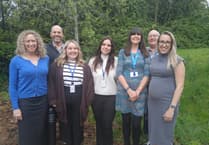THE well-being of the hill farming community is fundamental to the future of Dartmoor as a National Park in landscape, cultural, ecological and enjoyment terms.
It's also vital for the viability and sustainability of our rural community.
Employment, care for the environment, tourism, family structure and life, tradition, rural services and businesses are all inter-related. They come together to give us the Dartmoor we know today.
It has been shaped, to a great extent, by more than 5,000 years of farming. Working and re-working the land, farmers have created and maintained much of the landscape.
Today, more than 90% of the land is used for farming. Much of it is open common where livestock is grazed by commoners and farmers who have rights to use the land.
Some of the moorland is enclosed, the remainder is made up of improved grassland, woods, shelterbelts, wetlands, rough pasture, traditional buildings and archaeological features.
Landowners and commoners are allowed to burn the moorland vegetation. It's all part of the age-old art of swaling, clearing the ground of dead vegetation so new growth can appear.
Nationally, burning can only take place between November 1 and April 15. However, on Dartmoor, a recognised voluntary code ends burning on March 31 because ground nesting birds often become territorial and the skylark, meadow pipit and the rarely seen curlew are beginning to nest by then.
The Dartmoor National Park Authority, through the Ranger Service, continues to support legal swaling by providing signs and practical assistance whenever possible.
The agreed sites are notified to various agencies in compliance with the Heather and Grass Burning code.
Each area will have pre-planned cut fire breaks or other natural boundaries like tracks or walls.
Throughout the duration of the swale commoners will be in attendance appropriately equipped.
Devon and Somerset Fire and Rescue Service, whenever possible, undertake a roving inspection of planned swales and liaise with the commoners and rangers.
Recently at Haytor, land owned by the authority, commoners, Natural England and myself met to discuss and agree the areas needing to be swaled.
Meetings like this have been taking place across Dartmoor on various commons that are in Higher Level Stewardship with Natural England.
Time and good weather are of the essence now and this year swaling has been deemed more important than ever because in recent years fewer grazing animals have been released on the highland commons resulting in the extra growth of plants such as gorse and bracken, which in turn may restrict public access.
For more information visit the website http://www.dartmoor.gov.uk">www.dartmoor.gov.uk




Comments
This article has no comments yet. Be the first to leave a comment.